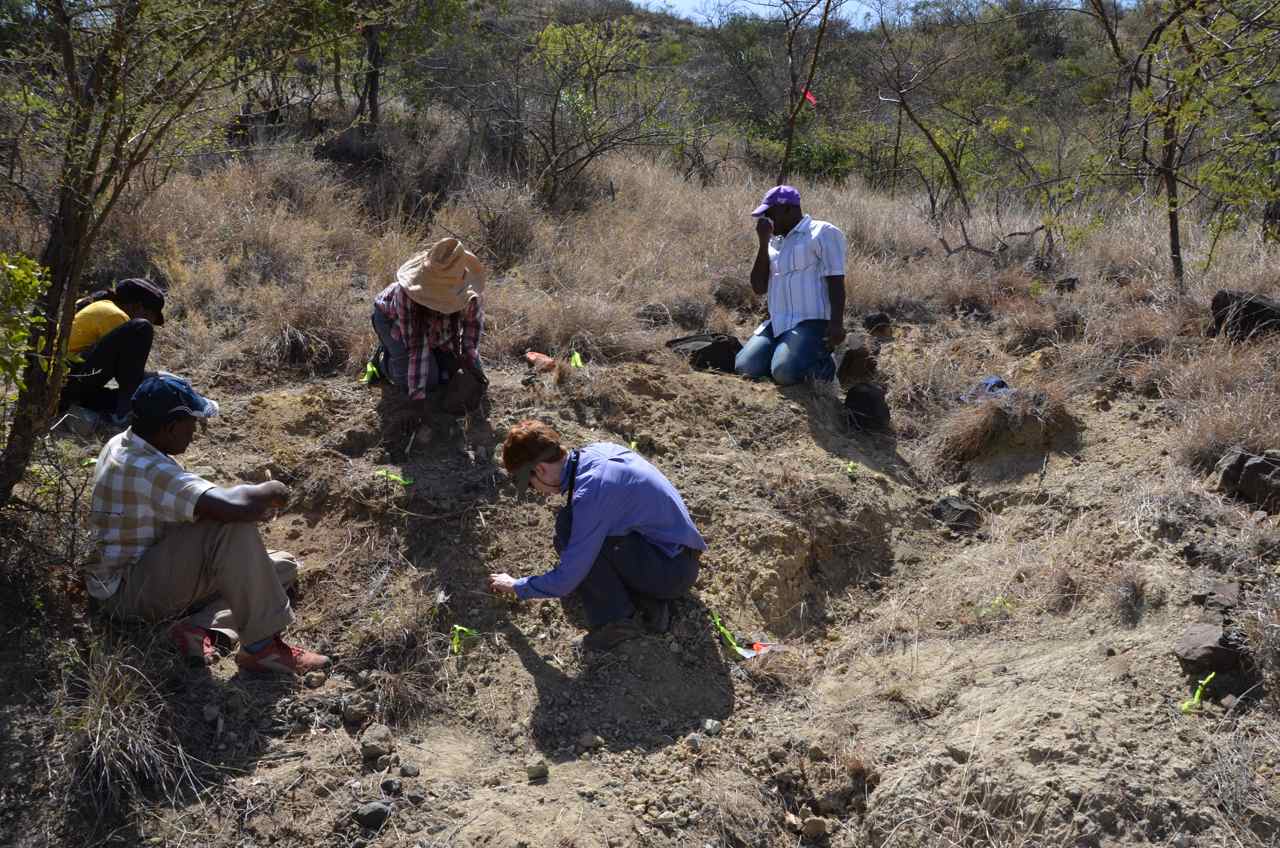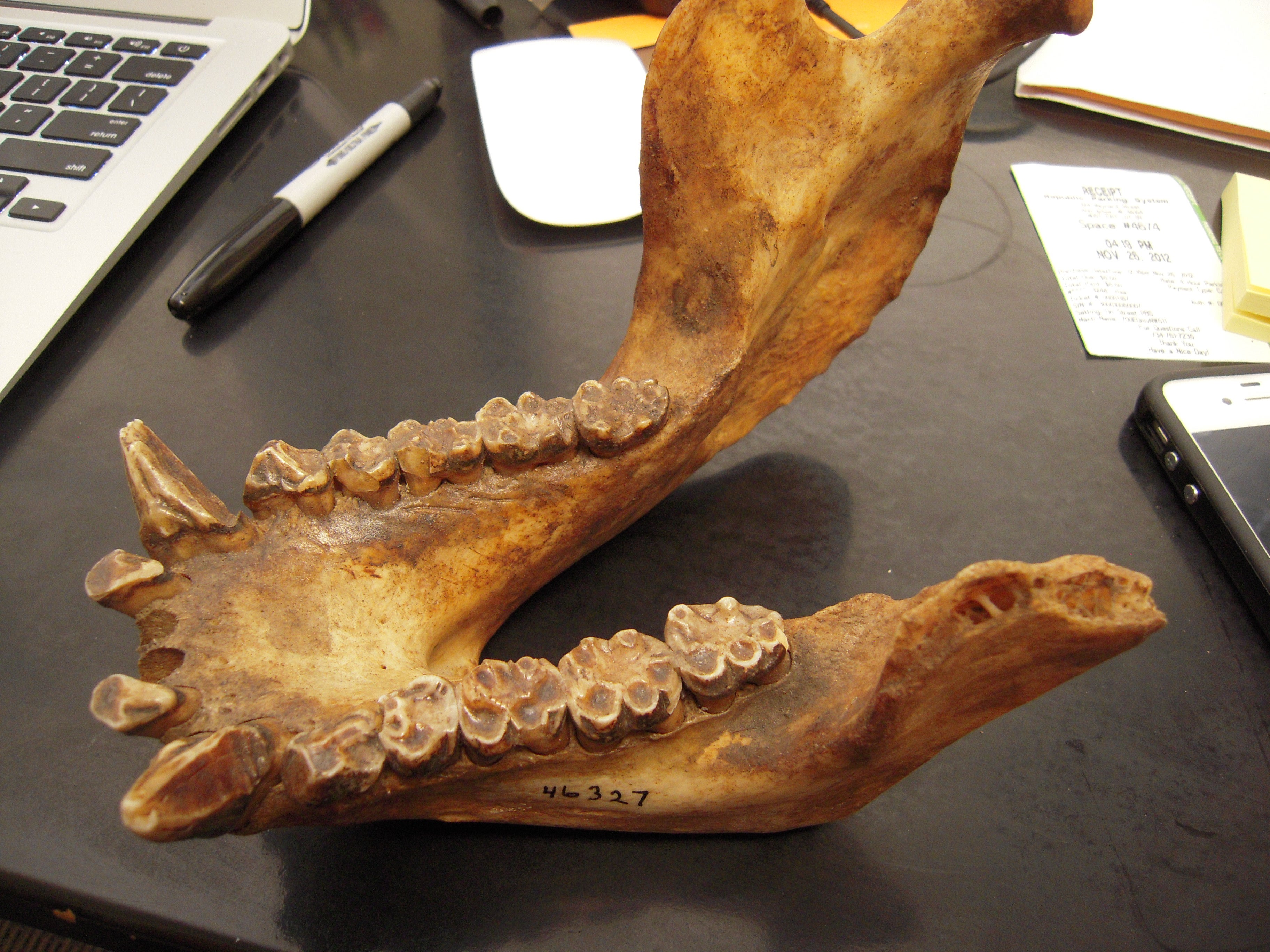1. Exploration of fossiliferous Miocene sediments in Eastern Uganda
Since 1994, I have directed a multidisciplinary Miocene age (~20 Ma) paleontological project in eastern Uganda. The Ugandan fossil sites occur on the flanks of three ancient volcanoes (Moroto, Napak and Mt. Elgon) and document the emergence of the oldest known hominoids, including Morotopithecus bishopi, as well as among the oldest Old World monkeys and other primate species (e.g. primitive catarrhines, lorisoids and pliopithecoids).
The ongoing goals of the project are:

1) Reconstruct the biology of early hominoids (and other catarrhines) in order to understand basal hominoid features and how they may have influenced subsequent evolution.
2) Reconstruct the paleoenvironment. Data on faunal and floral composition, stable carbon and oxygen isotopes, and depositional environments are being integrated, enabling us to  better reconstruct the ecological context and the adaptive landscape of these early apes. Such data will also allow us to determine the site-specific ecologies of early Miocene fossil sites in East Africa, and how they change over time, ultimately allowing us to better understand the relationships between derived hominoid adaptations and their environmental contexts in the early Miocene.
better reconstruct the ecological context and the adaptive landscape of these early apes. Such data will also allow us to determine the site-specific ecologies of early Miocene fossil sites in East Africa, and how they change over time, ultimately allowing us to better understand the relationships between derived hominoid adaptations and their environmental contexts in the early Miocene.
3) Continue exploration of sediments on the Moroto and Napak volcanoes in order to locate  new fossil sites.
new fossil sites.
4) Compare the Ugandan sites to those of a similar age in Kenya in order to fully develop regional models of geology, paleoecology and phylogeography with respect to the catarrhine and hominoid primates. This phase of research is being carried out in concert with the REACHE (Research on East African Catarrhine and Hominoid Evolution) project.
2. Comparative Primate Anatomy and Biology
I use a variety of functional anatomical techniques, including classical linear osteometric  comparative methods (e.g. MacLatchy et al., 2000), three-dimensional analyses of joint surface shape (e.g. MacLatchy, 1996), microCT imaging and analysis of cortical and trabecular bone structures (e.g. MacLatchy and Muller, 2002), and biomechanical analyses of limb shaft cross-sectional properties (MacLatchy et al., 2000; Madar et al., 2002) in order to establish form-function correlations in living primates that can then be used to reconstruct the forces and ranges of movement that fossil bones, especially joints, are adapted to withstand and undergo.
comparative methods (e.g. MacLatchy et al., 2000), three-dimensional analyses of joint surface shape (e.g. MacLatchy, 1996), microCT imaging and analysis of cortical and trabecular bone structures (e.g. MacLatchy and Muller, 2002), and biomechanical analyses of limb shaft cross-sectional properties (MacLatchy et al., 2000; Madar et al., 2002) in order to establish form-function correlations in living primates that can then be used to reconstruct the forces and ranges of movement that fossil bones, especially joints, are adapted to withstand and undergo.
More recently, I have begun to use dental functional morphology (MacLatchy et al., 2010; Rossie and MacLatchy, 2013) and stable carbon and oxygen isotopic studies (in prep.) of living primates to reconstruct the diet of fossil catarrhines from Uganda.
 An understanding of the adaptive significance of the anatomical complexes we encounter in the early Miocene will inform our understanding of hominoid evolution and ultimately, the origin of the human lineage.
An understanding of the adaptive significance of the anatomical complexes we encounter in the early Miocene will inform our understanding of hominoid evolution and ultimately, the origin of the human lineage.
3. Primate Locomotor Ecology
The living hominoids are distinguished from almost all other primates by features related to orthogrady (upright torso) and differential use of the fore- and hindlimbs. I am investigating how locomotor and postural versatility contribute to the foraging success of wild chimpanzees. By investigating arboreal behaviors and their ecological context, I hope to better understand why versatile locomotor behaviors evolved.






